Kalanchoe is a very common plant, but only a few flower owners know the history of its origin. Knowing where the Kalanchoe came from on our window sills and where the homeland of the houseplant is located will help determine the features of caring for it and avoid mistakes. Growing plants in apartments most often has not only a decorative purpose; Kalanchoe is widely used in folk medicine and is the source of many trace elements useful for the body.
Content
Homeland and the history of growing a houseplant Kalanchoe
The homeland of the plant is the warm tropics of Madagascar. In the natural environment, Kalanchoe prefers mountainous terrain. There it can reach one and a half meters in height. The plant can also be found in Australia, India, New Guinea, the Moluccas, the American and Asian tropics.
The first mention of Kalanchoe dates from the 18th century. Notes on the plant were found in the ship's logbooks of sailors. One sailor contracted a tropical fever. This disease was considered incurable, so he was left to die on the nearest island.
On the way back, the crew of sailors decided to look at the island in order to honor the memory of the deceased comrade. The amazement of the sailors knew no bounds when they saw a perfectly healthy sailor. A miraculously cured sailor willingly told the story of his healing. The inhabitants of the island picked it up and treated it with an unusual plant called Kalanch. In the local dialect, this word was also used to define the word health.
Thus, due to the medicinal properties of Kalanchoe, they learned about it all over the world. A team of sailors brought with them a green doctor for further distribution.
Kalanchoe flower characteristics and species diversity
Kalanchoe refers to perennial succulents. The genus Kalanchoe is divided into herbaceous plants, vines and shrubs. Some species are epiphytes.
The leaves are juicy, fleshy. They can fit snugly on the stem or be attached with petioles. Some species have an edge on leaf blades. The color of the leaves varies depending on the type of plant. In most cases, it is monophonic, represented by different shades of green. There are also variegated Kalanchoe with purple or red inserts on a green background or marble in the color of the plates.
There are beautiful flowering species. You can appreciate the charming Kalanchoe flowers in the photo below.
Flowers are collected by multifloral umbellate inflorescences. Most often, inflorescences are located at the apex. Less often - on the sides of the plant. The color of the flowers depends on the species: white, yellow, purple, shades of red. As a rule, flowering occurs in the autumn-winter period, however, some species bloom in spring.
The following plant types are distinguished:
- Beharsky is a herbaceous plant that is distinguished by bare, not prone to branching stems. Falling leaves leave scars. Leaf plates have a wax coating and edge. The shape of the leaves is wedge-shaped. Inflorescences are apical. The flowers are small. On the yellow petals there is also an edge.
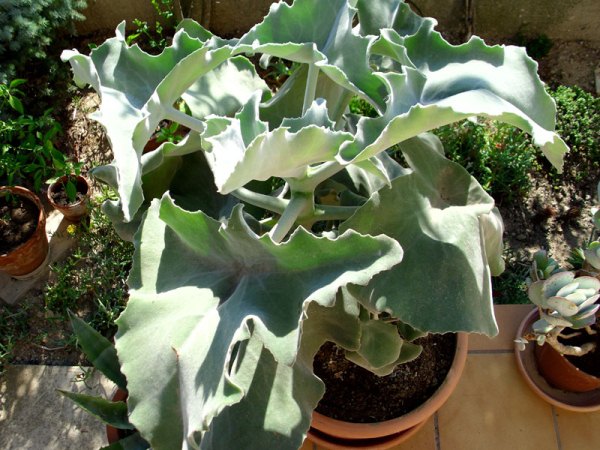
Behar - Blossfeld is a low shrub with smooth egg-shaped leaves. The color of the leaves is represented by a combination of red and green. Beautiful blooming view. It blooms profusely. Depending on the variety, the petals can have red, white, purple, yellow.
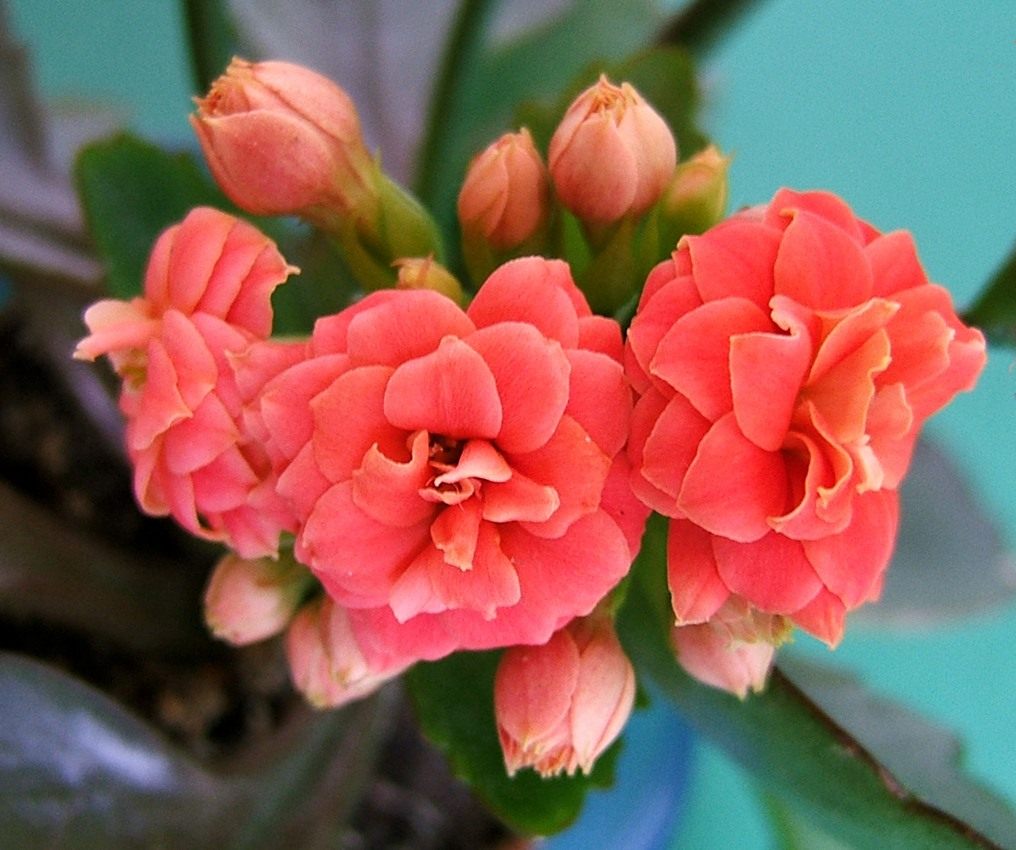
Blossomfeld - Benta (Bristle Leaf) is a powerful shrub with thick rounded leaves. Blooms in the spring. The flowers are large, white.

Benta - Felt - popularly known as Cat ears. Shrub with densely pubescent erect stems. Has sessile oblong leaves. It blooms with small flowers of dark red color. Inflorescences are also pubescent.
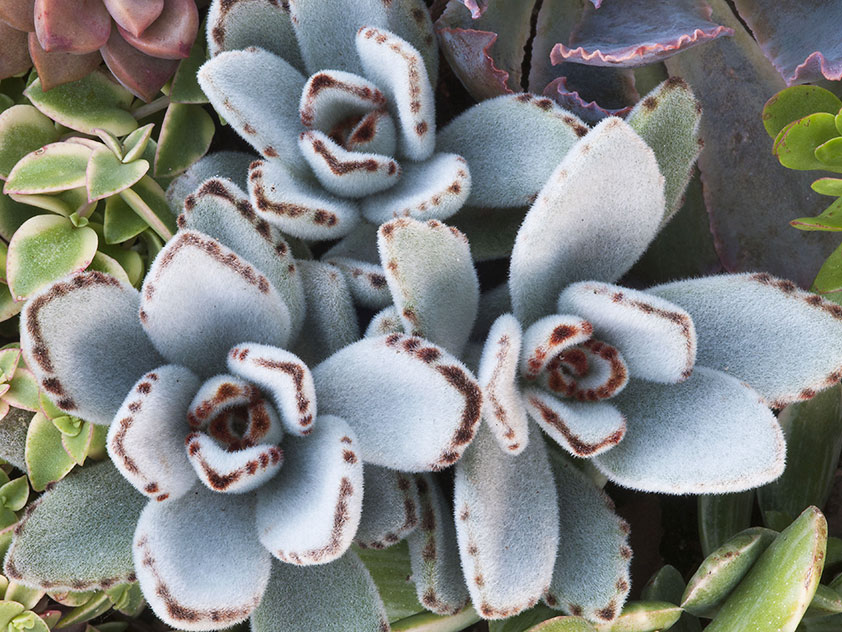
Felt - Degremon - a herbaceous plant with elongated fleshy leaves. Leaf plates are tucked along the central vein, have a pointed edge. The view is capable of forming children at the edges of leaf plates.
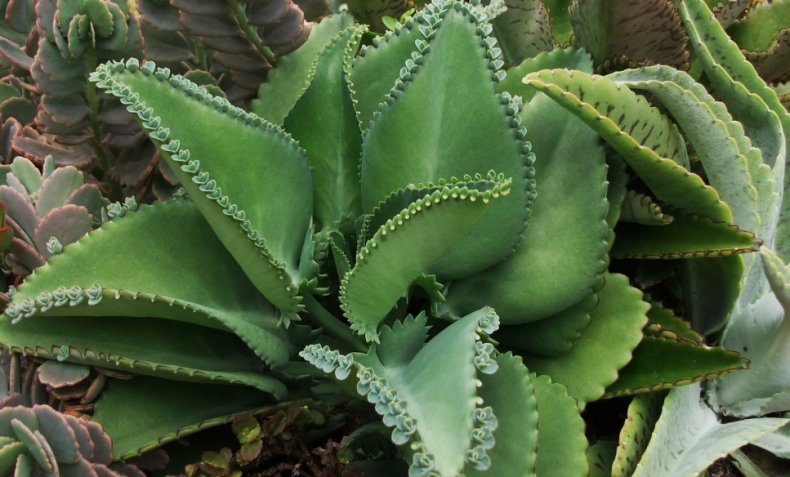
Degremon - Marble (large-flowered, Somali) - a half-meter shrub with unusual leaves. The leaves have an obovate shape with recesses along the edge. They bloom green, but eventually acquire a bluish tint, lilac spots appear on the outside of the plates. Representatives of the species bloom in small white flowers.
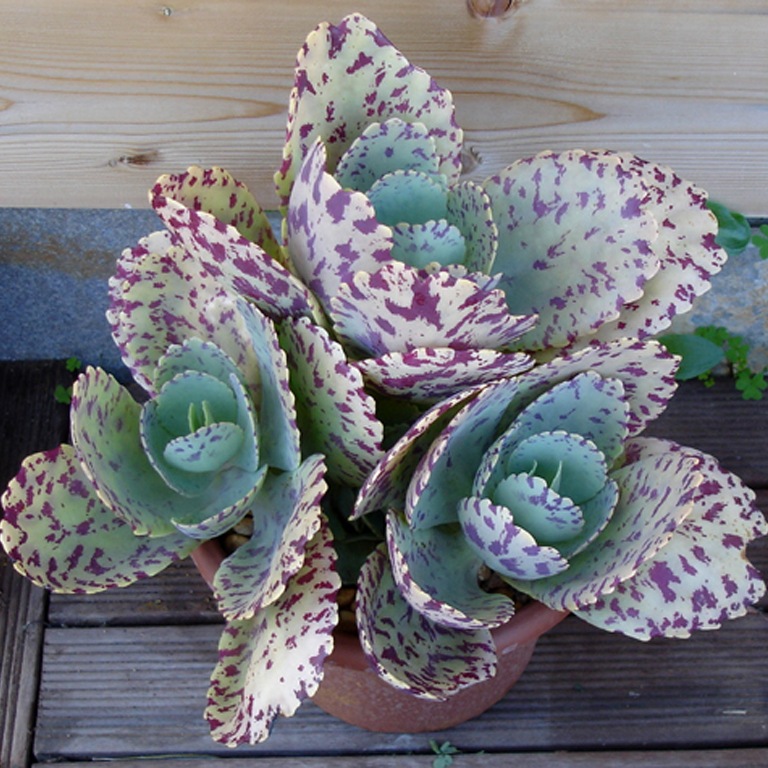
Marble - Large-flowered - a shrub with sessile lobate-toothed leaves. Initially, they are green, in the sun they get a reddish tint. Blooms in May with large flowers of red or yellow.
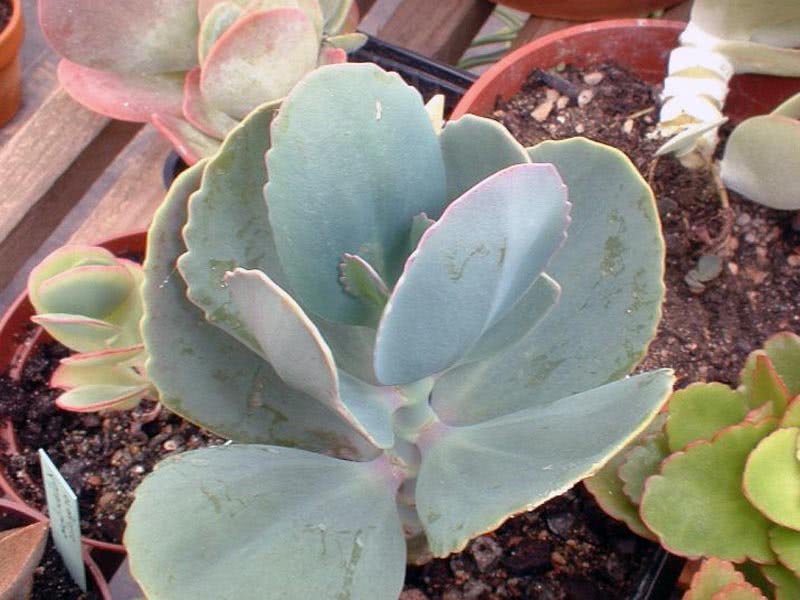
Large flowered - Mangin - a bush is grown as an ampel plant. Representatives of the species are characterized by drooping inflorescences with a large number of pink-red flowers. The flowering period begins in the spring.
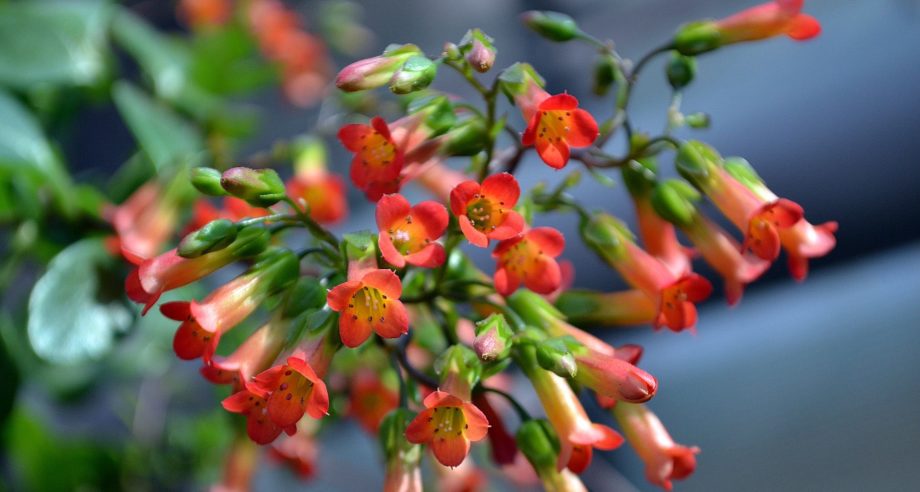
Mangina - Paniculata - a grassy Kalanchoe with a thick basal rosette of leaves. On the green obovate leaves, a purple border appears over time. Flowering occurs in April. Inflorescences consist of small yellow flowers.
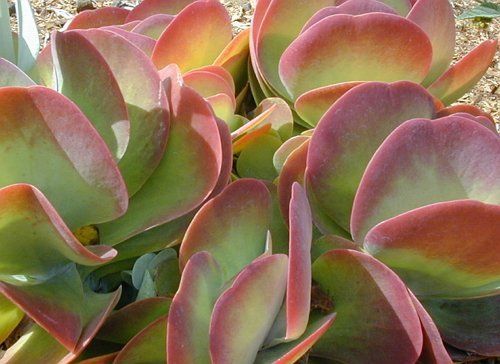
Paniculata - Fiery (Fiery red, Bluish) - herbaceous flowering plant. It grows to 30 cm. The leaves are dark green, obovate. The flowers are large, bright red.
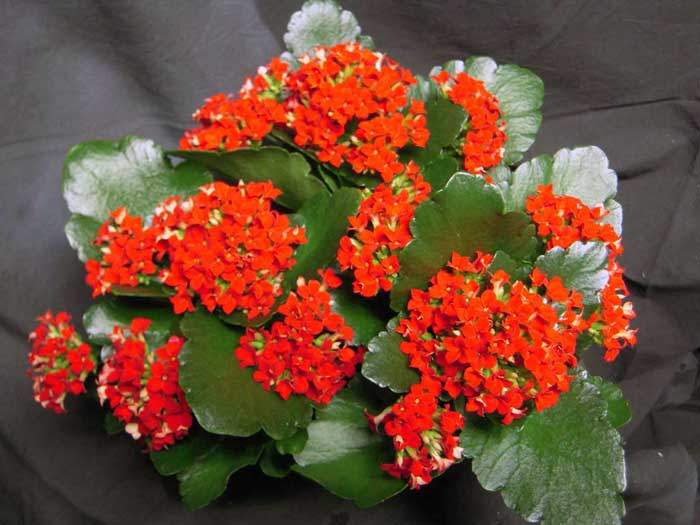
Fire red - Cirrus - differs in a different form of leaves on one bush. The lower ones are ovoid, the upper ones have a cirrus-dissected shape. Blooms drooping inflorescences. The color of the petals is expressed in shades of red. This species is capable of forming children.
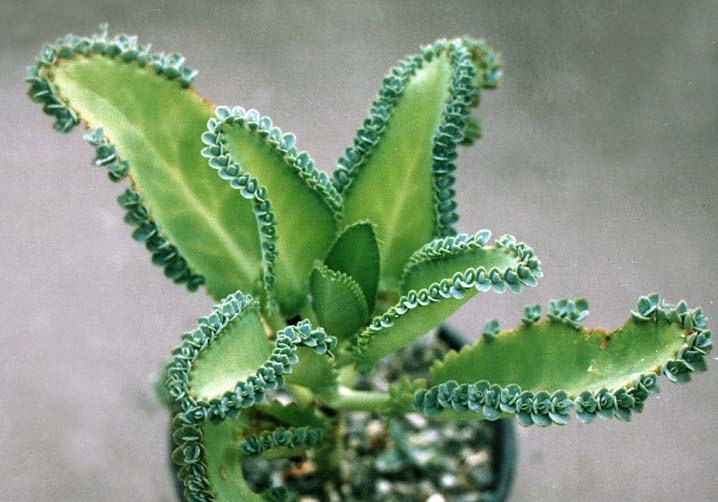
Pinnate - Tubular-flowered (Tubal-flowered) - a shrub with numerous narrow leaves, on which a large number of children are located. Their color is green with a grayish tint. It has many hybrids. The color of the petals is diverse.
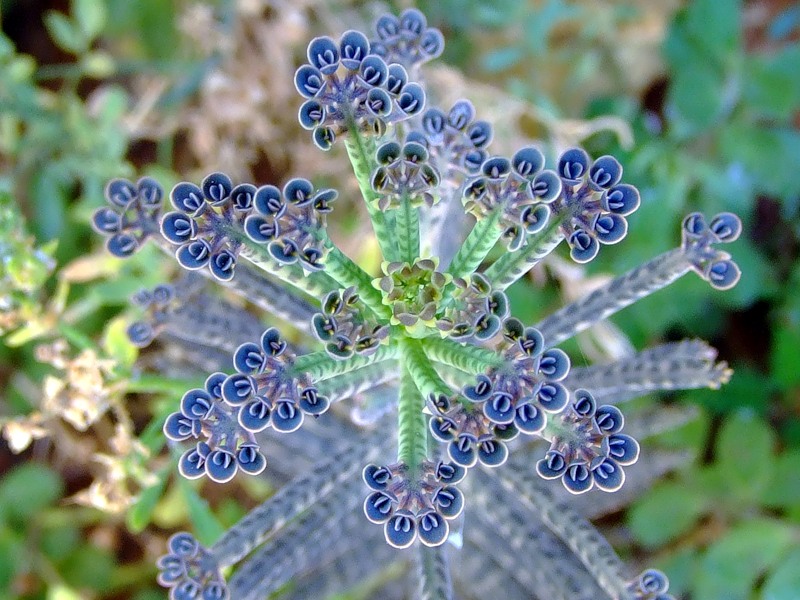
Tubular - Dissected (Lobed) - popularly called Deer horns. Grassy appearance with juicy fleshy shoots prone to drooping. The leaf plates are fleshy, deeply dissected. On the lettuce surface of the leaves there is a waxy coating. It blooms profusely. The color of the flowers is yellow-orange.
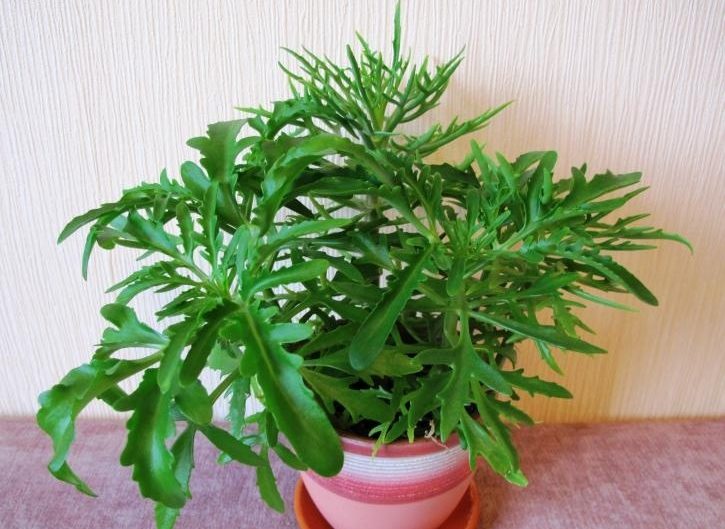
Dissected
Kalanchoe care at home
Almost all types of Kalanchoe take root well. Caring for them at home will not seem difficult if you adhere to the basic recommendations for growing a flower.
Lighting
Kalanchoe loves bright light, but he gets tired from prolonged lighting. The maximum allowable daylight hours for a flower is 10-12 hours. In summer, many gardeners cover it with a curtain for the night, which is removed only by noon. Thus, the flower has time to rest from the light.
It is advisable to place the pot on the west or east side. In winter it is transferred to the south side. If this is not possible, additional lighting can be installed as an alternative.
Temperature and humidity
Kalanchoe is thermophilic. The critical minimum for the plant is + 10 ℃. At lower rates, it begins to freeze.The flower feels comfortable at an ordinary temperature for residential premises: + 18 ℃ - + 28 ℃. In winter, the permissible content at + 14 ℃.
The flower is not too picky about air humidity. He is equally comfortable in conditions of both medium and high humidity. But in the hot summer, when the air becomes overdried, it is recommended to spray Kalanchoe additionally.
Watering and feeding
During the growing season, the flower is watered on demand: as soon as the topsoil dries out. For irrigation use soft defended water. Experts recommend watering the plant through a tray. During hibernation, watering is cut. It is enough to moisten the plant on the 3-4th day after drying of the upper ball of soil.
Despite the fact that Kalanchoe refers to succulents - plants that can accumulate moisture in the leaves, it is very demanding on the issue of moisture. Unorganized watering leads to the development of diseases. Too overdried Kalanchoe discards leaves, and in a waterlogged flower root rot develops.
Plant nutrition is carried out in the summer and during the formation of buds. It is advisable to alternate mineral and organic fertilizers. Minerals are administered up to 4 times a month, organics - up to 2 times. Liquid fertilizers for cacti are great for flower.
Pruning and pinching
Pruning a plant is carried out as necessary, which occurs for two reasons:
- Pinch to form a bush.
- Removing dried flower stems.
Both types of trimming are required. Many gardeners, forming a bush, cut down hanging shoots and immediately root them in the mother's pot. Such flowerpots look especially beautiful during flowering.
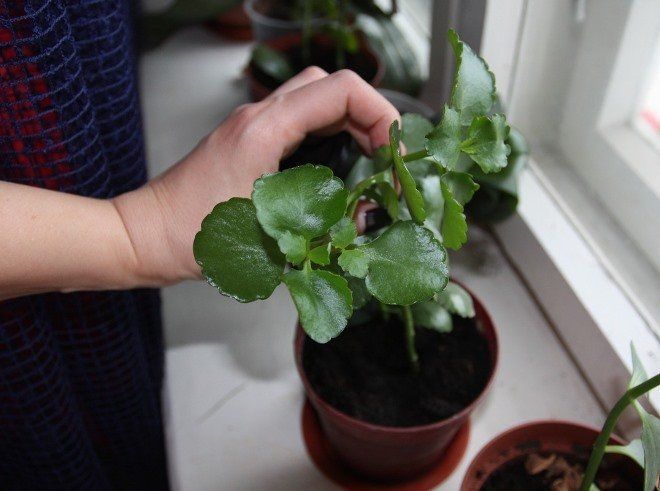
Diseases, pests and methods of dealing with them
Kalanchoe may be subject to the following diseases:
- Gray rot. Sticky gray coating on the leaves, destroying their structure. The cause of the occurrence is non-compliance with the irrigation regime and insufficient ventilation of the room.
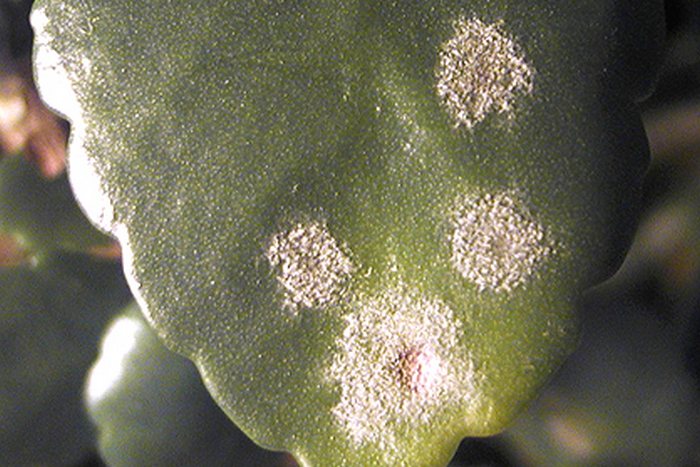
Gray rot - Late blight (late blight). Brown or brown coating on the leaves. It occurs due to poor air exchange and waterlogging of the soil.
- Powdery Mildew White spots with plaque on the leaves of the plant. The cause of the occurrence is too high temperature and dry air.
- Ring spotting. Rotting of the stem and small brown spots of an annular shape on the surface of the leaves. Viral disease.
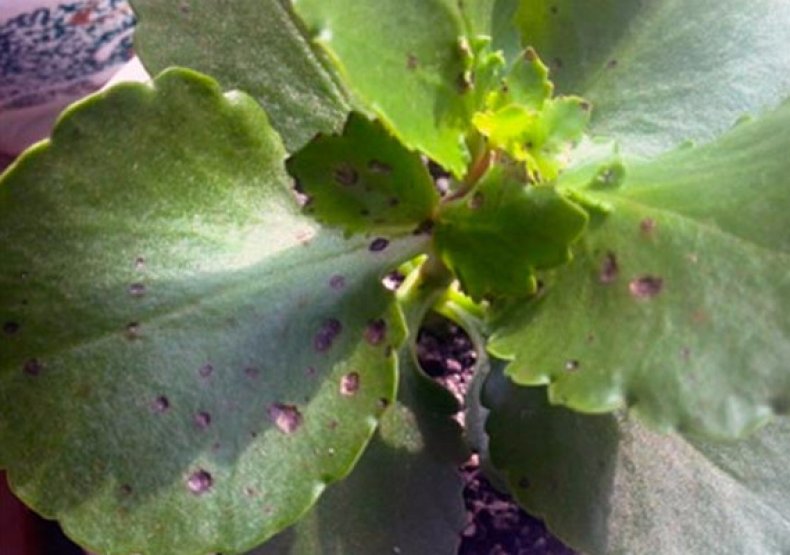
Ring spotting - Stem rot. Blackening of the stem with its subsequent decay. Occurs at low temperature flower content.
Gray rot, late blight and powdery mildew are treated by replacing the soil and treating the plant with fungicides. The same can be done with an unreleased stage of stem rot. All damaged parts of the plant are removed. Slices are treated with an antiseptic. Ring spotting is incurable.
Kalanchoe is often attacked by pests: mealybug, aphid, scutellum, ticks. You can get rid of insects by treating the flower with insecticides or a mild soap solution.
How to propagate and transplant a flower at home
The plant is propagated in three ways: by cuttings; seed way and kids. Getting a new flower from the cuttings is quite simple. For this, a leaf with a cuttings is cut off from the mother bush and placed in fertile soil for rooting.
To speed up the rooting process, the stalk is covered with a transparent cap. To do this, a glass jar or a cut plastic bottle will do. It is better not to water the soil under the cuttings, but to spray.Rooted and matured stalks are transplanted into a separate pot as an adult plant.
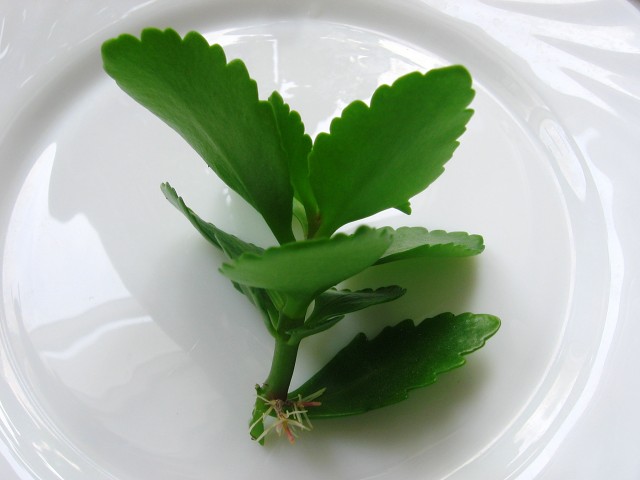
Reproduction of a flower by seed means such actions:
- The container is filled with peat-rich soil.
- Seeds are sown on moist soil without burying. To prevent leaching of the seed, you can slightly trample them with your fingers or press down with a ruler.
- The container is covered with glass and shaded with paper. It is placed in a room with a temperature of 16 ℃ to 20 ℃. Seed care involves daily spraying and ventilation.
- Glass and paper are cleaned when sprouts appear.
- 3-4 weeks after sowing, the sprouts dive into larger containers.
- When 3-4 leaves appear on a young Kalanchoe, it is transplanted into a separate pot as an adult plant.
On some types of flower, children form. As a rule, they have their aerial roots. Children are carefully separated from the mother bush and planted in separate pots. Caring for children is similar to caring for adult Kalanchoe.
Young Kalanchoe is transplanted annually. It is permissible for an adult plant to change the soil once every 2-3 years. It is recommended to transplant a flower in the spring. Transplanting flowering Kalanchoe is unacceptable.
The soil is well suited for succulents. You can prepare the soil yourself. To do this, you need the following components:
- turf land (1/2);
- sheet earth (1/4);
- sand (1/8);
- peat or needles (1/8).
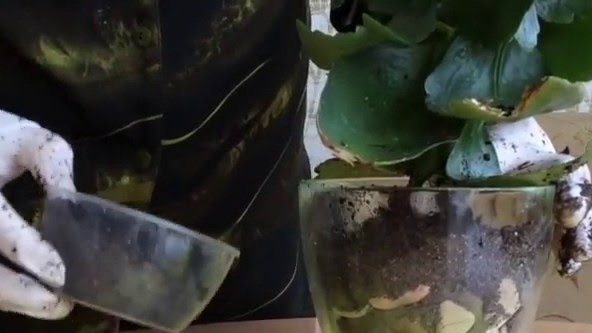
The plant has a very developed root system, so the pot should be spacious. Kalanchoe is watered from below, so the flowerpot should be selected with a removable tray and drainage holes.
Useful properties of Kalanchoe and use in traditional medicine
Kalanchoe has a lot of useful properties. In particular, the plant has the following medicinal effects:
- wound healing;
- anti-inflammatory;
- hemostatic;
- antiseptic;
- tonic;
- regenerative;
- cleansing;
- immunostimulating.
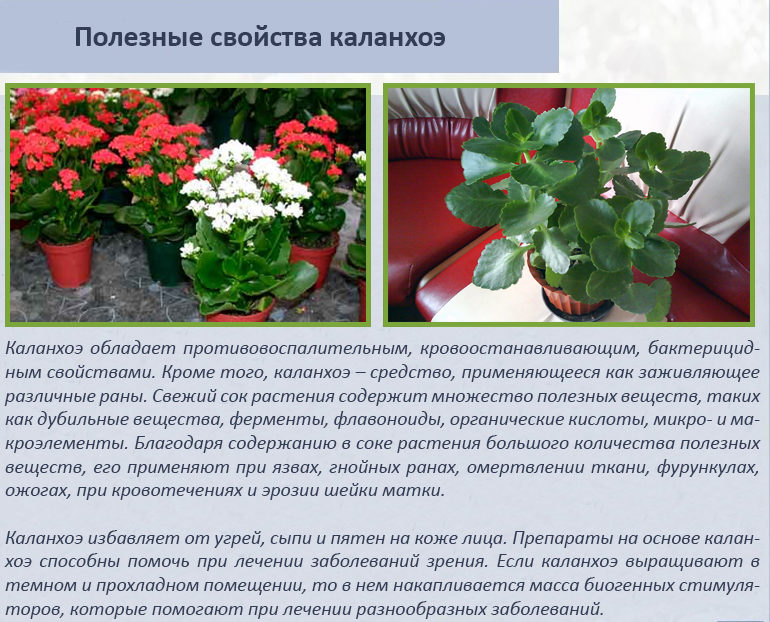
Traditional medicine uses an indoor flower to treat such diseases:
- Pressure ulcers, ulcers, hard to heal wounds.
- Abscesses, boils.
- Skin rash.
- Burns.
- Eczema.
- The consequences of insect bites.
- Chronic fatigue.
- Gastrointestinal diseases, including ulcers.
- Impaired kidney function.
- Cervical erosion.
The plant is especially popular among people with a cold and a runny nose. Previously, the drug Naphthyzin, which is contraindicated in small children, was a common cure for the common cold. Moms costed Kalanchoe juice, so now many people associate this flower with sneezing and childhood.
Traditional medicine also recognizes the medicinal properties of this plant, but, unlike traditional medicine, it uses the components of the plant only for external use.
Common indoor plant questions
Kalanchoe is a perennial plant with medicinal properties. It has a fairly developed species diversity. Most species are undemanding and easy to grow at home.

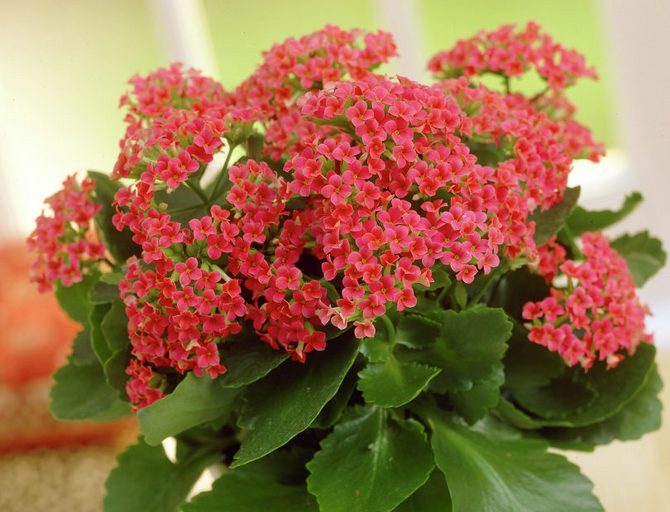
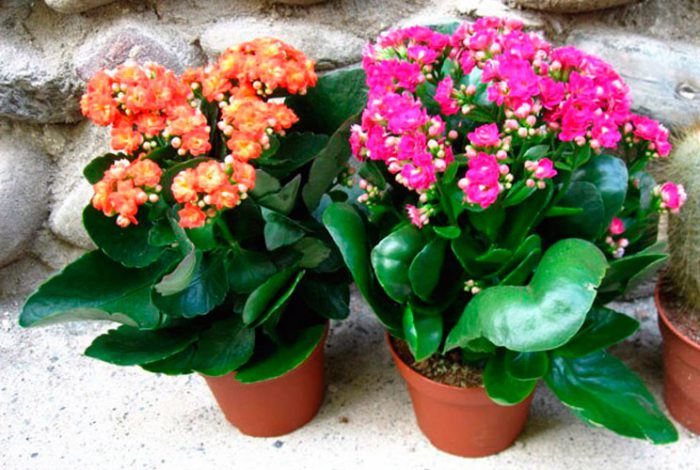
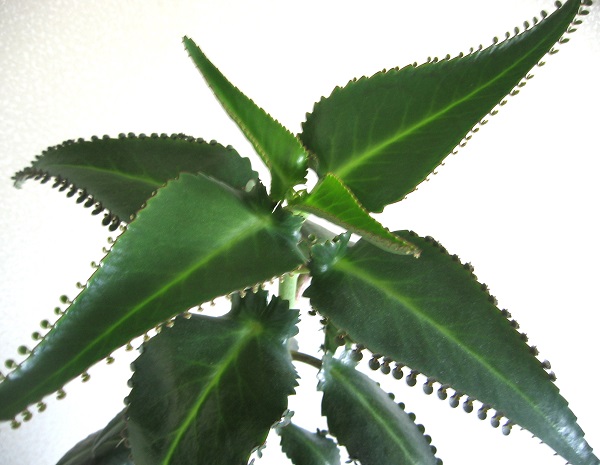
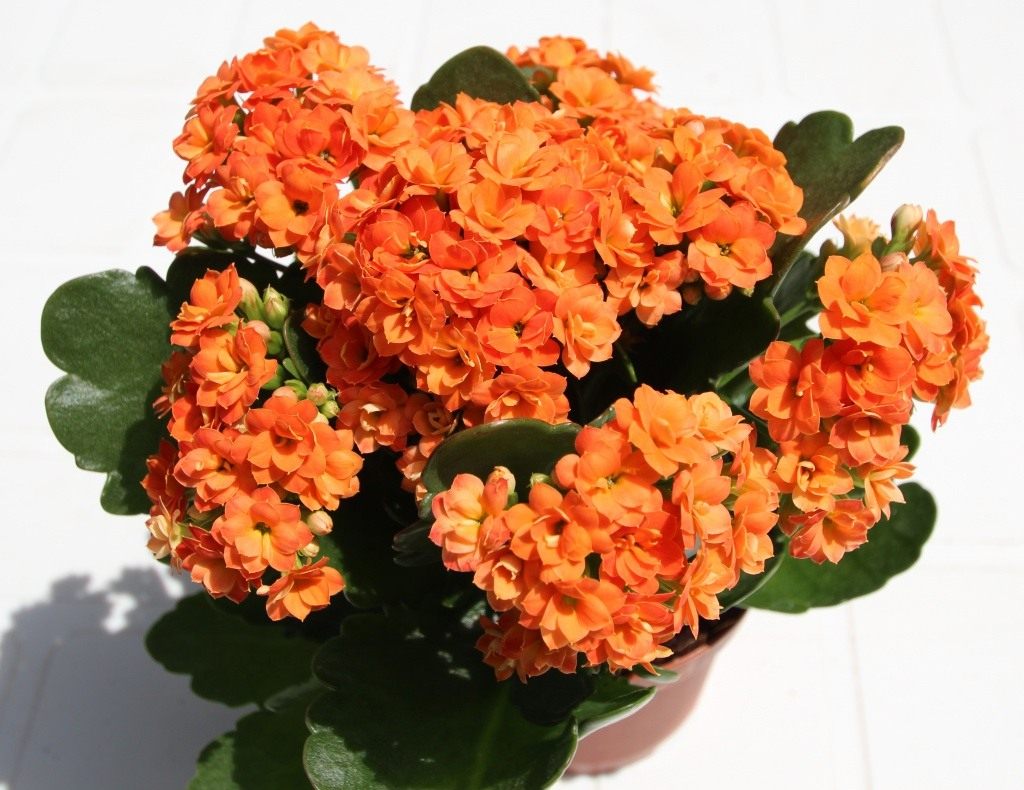
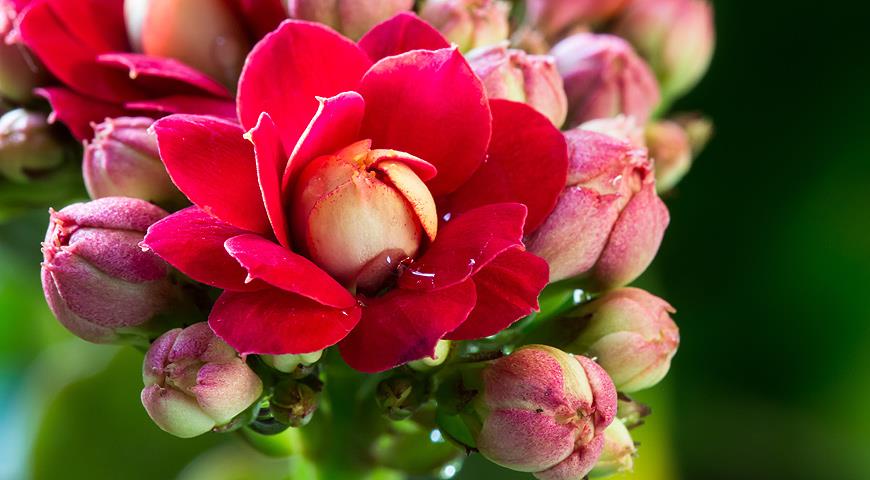
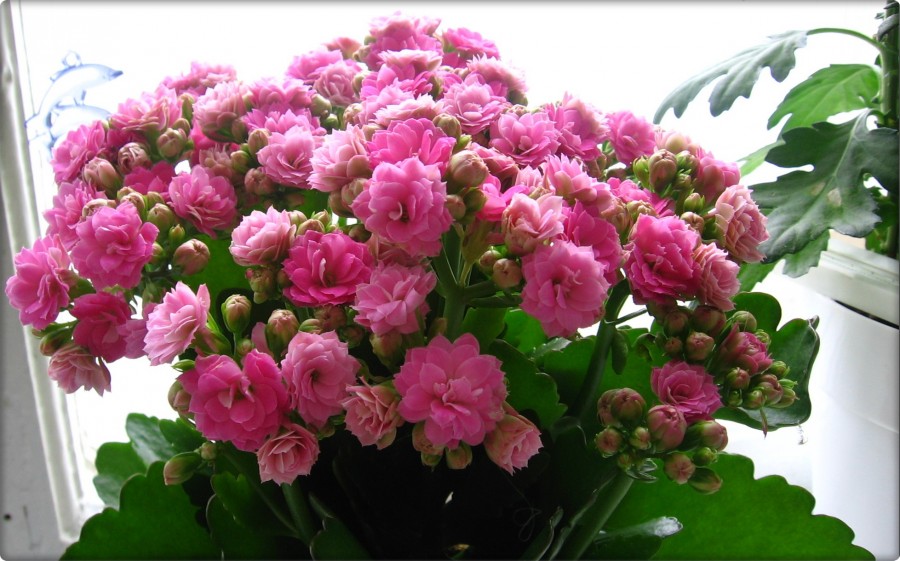



 10 beautiful annuals that bloom all summer
10 beautiful annuals that bloom all summer Sow in the ground, without seedlings: 10 beautiful and unpretentious flowers
Sow in the ground, without seedlings: 10 beautiful and unpretentious flowers Platicodon planting and outdoor care
Platicodon planting and outdoor care Hosta - planting and care in the open ground in the Urals
Hosta - planting and care in the open ground in the Urals